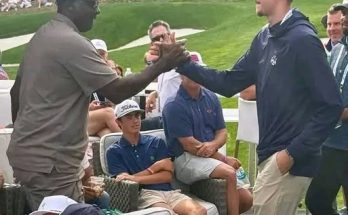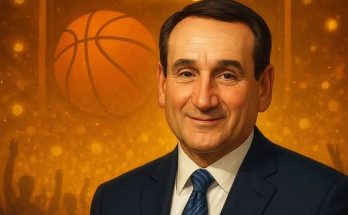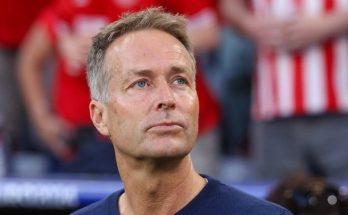In the high-stakes world of professional basketball, where player power and team-building strategies are in a constant state of flux, few topics command more attention than the long-term future of a bona fide superstar. For the past several seasons, that conversation has been inextricably linked to Giannis Antetokounmpo and his tenure with the Milwaukee Bucks. The two-time MVP, a Finals MVP, and the architect of the franchise’s first championship in half a century, has been the subject of a persistent, low-grade hum of speculation. And recently, that hum has grown into a more pronounced buzz, thanks in no small part to the insights of ESPN’s Shams Charania.
Appearing on the network’s “Get Up” program, Charania delivered a succinct but impactful message that has sent a ripple of anxiety through Bucks fans: Giannis’s future, despite the team’s best efforts, ultimately rests on his shoulders. The Bucks have been proactive, even at times desperate, in their attempts to build a championship contender around their cornerstone player. But as Charania explained, the question that Giannis is asking himself is not about loyalty or past success, but about the future: can this roster, in its current and projected form, win another title?
This is a subtle but critical distinction. It’s a shift from a narrative of a small-market hero defying the odds to one of a competitor in his prime, a player with a finite window to win championships, making a cold, hard evaluation of his circumstances. The Bucks’ actions, which have been bold and at times controversial, are all a response to this overarching question.
The most recent and glaring example of this is the decision to waive and stretch Damian Lillard’s contract in a move that freed up salary cap space to acquire center Myles Turner. On paper, the move was a strategic play to address a clear need on the roster. The Bucks needed another interior presence, a rim protector and floor-spacer to complement Giannis. Myles Turner, a talented and versatile big man, fits that mold perfectly. But the cost was steep. By parting ways with Lillard, who they had traded for just a year prior in a blockbuster deal, they took on a significant amount of dead cap money for years to come. It was a clear message to Giannis: we are willing to take drastic, even painful, measures to put a winning team around you.
The question, as Charania points out, is whether this move, along with other roster tweaks, is enough. The Bucks have made other additions, re-signing key players and bringing in veteran talent, all in an effort to demonstrate their commitment. They’ve built a roster that, on paper, is designed to be defensively stout and offensively diverse. But the NBA is a league of superstars, and the competition in the Eastern Conference is fierce. The Boston Celtics, the New York Knicks, and other contenders have all been aggressive in their own pursuits of talent. Giannis, who has always been laser-focused on winning, is acutely aware of this arms race.
Charania’s reporting suggests that Giannis’s evaluation process has been ongoing since as far back as May and that the conversations with his inner circle are very real. The key takeaway is that “nothing is set in stone.” This is the phrase that will send chills down the spines of Bucks fans. It’s an acknowledgement that the years of speculation, which Giannis has often dismissed with humor and a public commitment to Milwaukee, have a genuine basis in his current thinking. He is not a lock to stay.
This places the Bucks’ front office in an unenviable position. They have exhausted many of their most valuable trade assets and have limited future flexibility due to the Lillard situation. They have made their big swings. The pressure is now on the coaching staff to make it all work, to mold the new-look roster into a genuine championship contender. The upcoming season isn’t just about winning games; it’s a 82-game audition for the franchise’s future. Every loss will be scrutinized, every close game will be analyzed for what it says about the team’s long-term viability. The Bucks must not only win, but win convincingly enough to quell Giannis’s doubts and show him that the path to a second championship still runs through Milwaukee.
The implications of Charania’s report extend far beyond the city of Milwaukee. It’s a signal to the rest of the NBA that a generational talent could, for the first time in his career, become a realistic trade target. Teams, particularly those with a trove of assets and a desire to make a seismic move, are undoubtedly monitoring the situation closely. The New York Knicks, with their strong core and ample draft capital, have been consistently mentioned as a potential suitor. The possibility of Giannis joining a team with a young, talented roster and a passionate fanbase is a tantalizing thought for many.
The irony in all of this is that the Bucks’ front office’s attempts to appease Giannis may be what ultimately pushes him away. By making the difficult decision to move on from a player as talented as Damian Lillard, they’ve created an even more urgent timeline for success. There is no longer a safety net. The team’s fate, and by extension Giannis’s, is now tied directly to the performance of this new roster. The Bucks have made their moves; now, as Charania stated, it’s all up to Giannis. His decision will not just define his legacy, but could also reshape the entire NBA landscape for years to come. The basketball world holds its breath, waiting to see if the “Greek Freak” will remain the “King of the North” or seek a new kingdom.



